Realizing Children’s Rights in Suriname
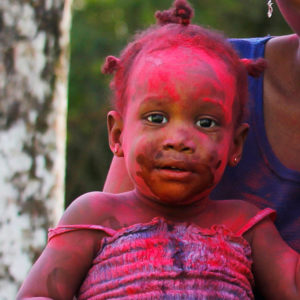
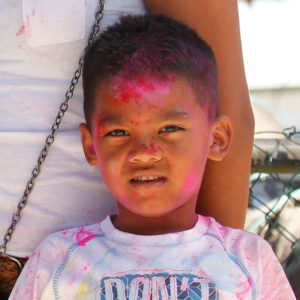
Suriname might be best known as the smallest South American country, but it is also the place where European, Indian, and African children live together in mostly urban areas of the country. Being one of the 196 countries that ratified the Conventions on the Rights of the Children, Suriname is taking small, but significant steps in tackling problems such as child malnutrition, child labor as well as exploitation. (UNICEF, 2016)

Children’s Rights Index: 8,04 / 10
Orange level: Noticeable problems
Population: 591, 798
Pop. ages 0-14: 26, 4%
Life expectancy: 71 years
Under-5 mortality rate: 17.6‰
Suriname at a glance
Suriname prides itself in hosting one of the most ethnically diverse communities in the world. Although the country is situated in the northern part of Latin America, its official language is not Spanish, but Dutch. The country used to be colonized by the Netherlands in the last century, and it gained its independence 47 years ago.
Descendants of South Asians, namely Indians, and Africans make up for the vast majority of Suriname’s ethnic composition. Their ancestors came to South America to work on plantations as slaves. Nowadays, there are many immigrants from countries such as China, Lebanon, Portugal, as well as the US, who come to enjoy the perks of tropical climate and lush greenery. Most of the citizens are Christians, with a small percentage of Muslims and Jewish. (Chin E H, 2022)
The country is situated between Brazil, Guyana and French Guiana. It borders the North Atlantic Ocean, and it is usually referred to as, “one of the greenest countries in the world” due to its endless fields of tropical rainforest. (Pool M, n.d.) Although it doesn’t directly share the border with the Caribbean Sea, Suriname holds a portion of the territory.
There are two seasons, namely dry and wet, but the temperatures don’t fluctuate during the years. The land is also inhabited by diverse species of birds, turtles, mammals and fish. Suriname’s rainforest is on the list of the UNESCO World Heritage site as one of the most extensive plots of land filled with bananas, citruses, coffee, coconut and other exotic fruit. (Chin E H, 2022)
Status of children’s rights [1]
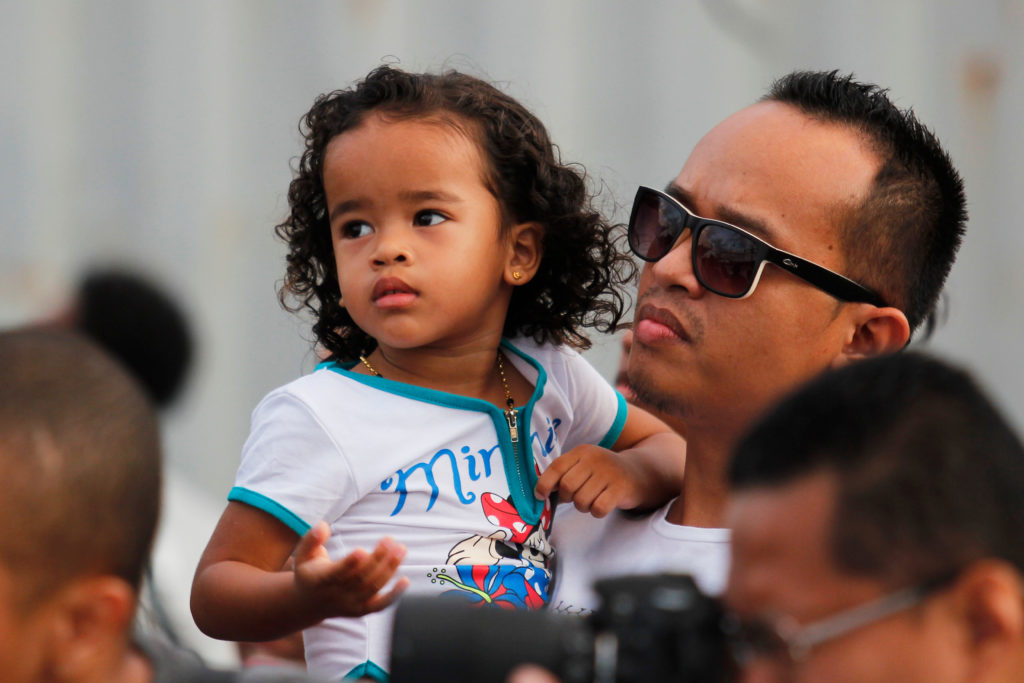
The government of Suriname swiftly embraced the children’s rights movement by agreeing to the Convention on the Rights of the Children in 1993. The leaders signed the protocols that guarantee children be safe from armed conflict, prostitution, and pornography, among others. Authorities actively organized marches that served to remind and reinforce the programs that protect the children. In 2014, acts were adopted to serve children and promote their rights. With that in mind, the government made new amendments that punish culprits involved in child pornography and prostitution. (CRIN, 2016)
The authorities are proactively supporting children through financial donations of school uniforms and supplies, as well as establishing child helplines with psychologists providing counseling. Social welfare is also of crucial importance, as it helps poor-income families and children with disabilities become equal members of society in their own country.
The country is working on eradicating child labor and helping the affected families instead. They focus on sending children to school, where they aid their progress through various incentives. The government is working on educating the nation, and encouraging teachers to spread the word. When it comes to juvenile detention, Suriname did a good job in raising the official criminal responsibility age from 10 to 12. (CRIN, 2016)
The country of Suriname is also taking a stance in fighting climate change, maintaining biological diversity, as well as protecting wild fauna and flora. They have already ratified numerous treaties, such as the Cartagena Protocol, United Nations Framework Convention on Climate Change, and Paris Agreement, among others. The goal of these programs is to allow for organic and stable growth which is to help the local community preserve what they have and build a better future for their children. (ECLAC, n.d.)
Lack of real-time information and slow law implementation processes remain the key issues that put children in Suriname in a rather unfavorable position. However, the United Nations Country Team (UNCT) is working closely with the authorities on establishing organizations that monitor and enforce rules that protect children. The most affected groups among these are children with disabilities, as well as indigenous children that often fall victim to sex trafficking. (CRIN, 2016)
Addressing the needs of children
Right to health
The children of Suriname tragically die from diseases caused by various infectious pathogens resulting from contamination of food, water or insect bites. In addition, AIDS is still one of the leading causes of death in children below the age of five. (Worley A, 2017) Children are more likely to be bitten by mosquitos, which is why it was of crucial importance to bring the number of deaths to zero.
The good news is that no child has died of malaria since the introduction of a new treatment in 2015. The experts believe that a vaccine would help both children and adults avoid getting infected, apart from other effective measures such as repellents and mosquito nets. (Scientific Research, 2016)
Right to education
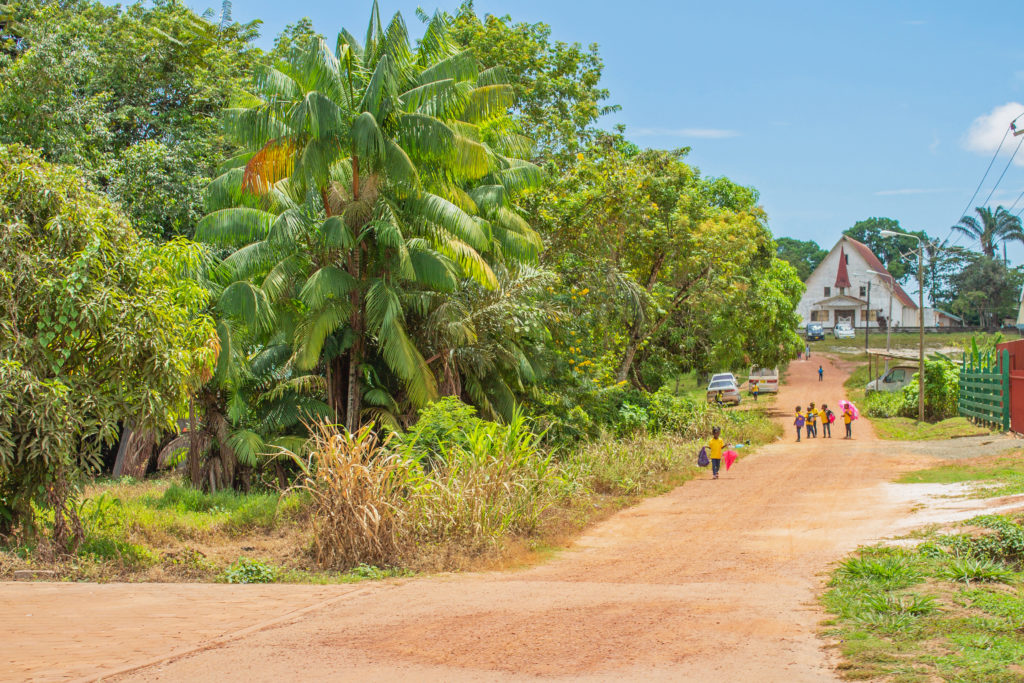
In cooperation with NGOs, the government in Suriname works hard on realizing children’s rights to access education. According to the UNHR’s report, 67% of children were enrolled in preschool in 2013, and only two years later, the number increased by 6%. (UNHR, 2017) The Ministry of Education is also continuously providing training to teachers that later on pass the knowledge about human and children’s rights to their pupils. Corporal punishments are now punishable by law, and children are able to actively participate in various competitions, programs and surveys that support their growth. (CRIN, 2016)
The country is implementing a series of reforms that are to equip both teachers and school inspectors to provide better guidance for children. Suriname’s government is also purchasing new uniforms and school supplies to improve the quality of education. Students who cannot afford school get financial help from authorities. Education is not only compulsory for children aged from 4 to 16, but it is also free, alongside transportation. Teachers are not only experts in their subjects but they are also trained to offer counseling services that help reduce dropout percentages. (CRIN, 2016)
Right to protection
A staggering 50% of parents in Suriname believe that physical punishment in school is setting their children up for success. On the contrary, experts in the field believe that children should have access to information that would enable them to defend themselves against such cruel methods. In addition to bad school practices, children living in foster homes also suffer discrimination as shelters are not regulated and equipped to support marginalized children.
Nowadays, the shelters started accepting child victims of trafficking and violence. The real problem still persists as there is not enough room for everyone, but offering protection to the most vulnerable ones is always the first step. In cooperation with international NGOs, Suriname is already working towards a solution by establishing rules and mechanisms that put children first. (UNHR, 2017)
“Under Article 19 children have the right to be protected from physical and mental violence, neglect, sexual abuse and exploitation, while they are in the care of parents or any other person. Article 3 para. 2 gives the child the right to such protection and care as is necessary for his or her well-being.” (Sandberg K, 2018)
Just a couple of years ago, children had only one place to voice out their concerns or report violence. The Youth Police wasn’t able to help and resolve most of these cases, as they were not authorized to act. However, ever since the social workers and child counselors stepped in, the police were able to forward and properly address children’s complaints that they have been receiving through a dedicated landline. (UNHR, 2017)
Risk factors -> Country’s specific challenges
Exploitation
The United Nations Country Team (UNCT) and the Pan American Health Organization (PAHO) both report on Suriname’s dangerous role as “the source and transit country for children and women migrating, legally or irregularly, internally or internationally.” (CRIN, 2016) Girls are usually taken against their will to mining camps, casinos, or the streets of the capital Paramaribo to perform illicit activities.
Occurrences of rape and molestation are not uncommon in the country’s interior, most of which are racial-oriented toward indigenous children. UNCT and PAHO are urging the government to protect the girls by imposing harsh fines and penalties. Also, girls might stand a better chance to safeguard themselves by having access to free education and trained teachers who are able to support them. (CRIN, 2016)
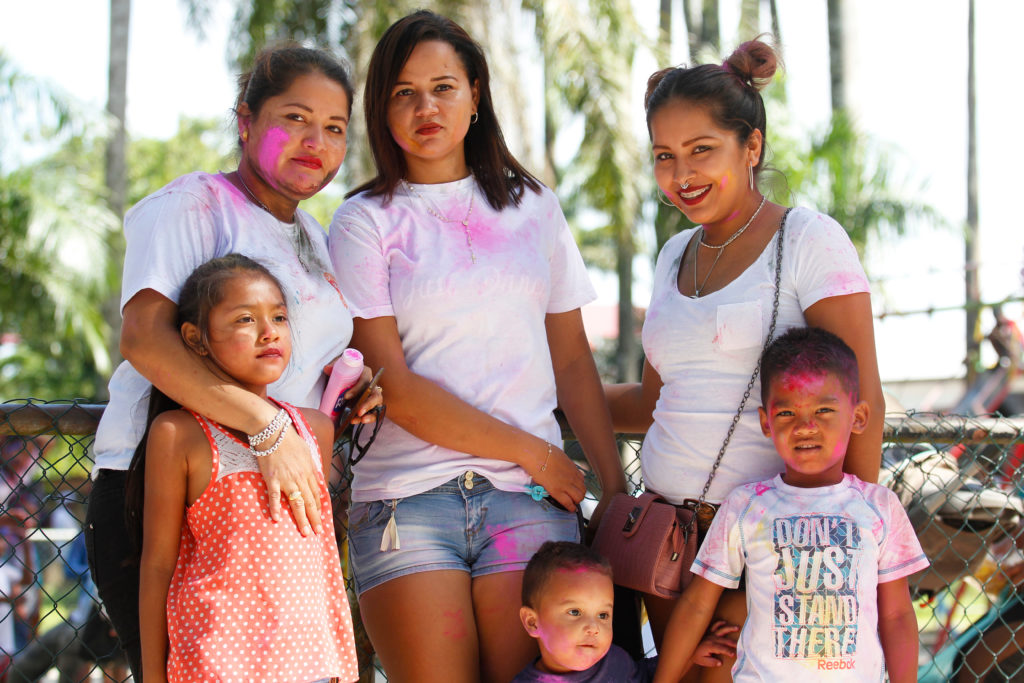
Traffickers in Suriname don’t only exploit the victims in their country, but they also send girls and women from neighboring Brazil, Dominican Republic and Guyana to the Netherlands. Regardless of their end destination, these girls are trafficked for labor and sexual exploitation. Although Suriname is making slow progress since 2013, and assigning more inspectors to find and help the victims, they are also struggling to meet ends meet. Along with poverty and corruption, the lack of shelters for the victims is also among the most glaring problems. (WFB, 2022)
Child marriage
Suriname doesn’t have a strategy in place to protect young children from prematurely getting married. According to statistics, there are 36% of marriages registered in the country that involve girls under the age of 18. (Girls Not Brides, 2020) The government doesn’t follow any particular procedures because, off the record, there is no minimum legal age for marriage. Spouses often engage in informal ceremonies in rural areas, which makes it challenging to follow the statistics, as they don’t have a habit of officially registering the union.
Just like in many other countries, the data shows that girls who attend high school are less likely to marry underage. Child marriages are more common amongst poor, as well as indigenous communities. Even though Suriname ratified the Convention on the Rights of the Child in 1993, where it is clearly outlined that children must consent to marriage and be at least 18 years old, the country is yet to follow these rules. They have also signed the Montevideo Consensus on Population and Development in 2013, which serves to combat high numbers of teenage pregnancies but it’s yet to be seen how Suriname will approach this alarming issue. (Girls Not Brides, 2020)
Child labor
Although Suriname has already achieved success in many fields of children’s rights, the country continues to struggle with the eradication of child labor. There hasn’t been a significant improvement in children’s rights in the child labor sector since 2020. The problem continues to prevail and many children get caught up in illicit activities, such as mining, trafficking and sexual exploitation. In this case, the government is undoubtedly responsible for not enforcing the existing rules, which then, consequently, puts all good efforts to waste. (U.S. Department of Labor, 2020)
Considering that most of Suriname’s citizens reside in urban areas, the government doesn’t pay close attention to children living in the interior. Although they have hired more inspectors to follow up on the instances of child labor, they didn’t seem to gather information from the entire country but rather focus on the coastal area exclusively.
On the bright side, the inspectors have been trained according to worldwide standards and they have been undergoing virtual training sessions that will enable them to properly identify and help children illegally involved in namely, agricultural and mining sectors. (U.S. Department of Labor, 2020)
Poverty
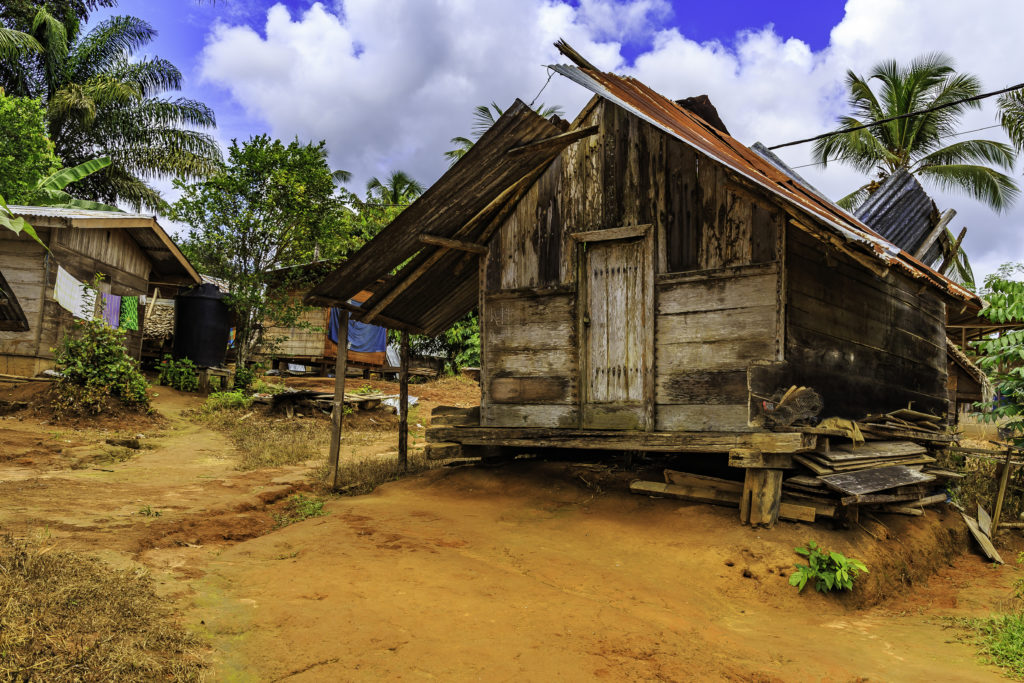
Most of Suriname’s surface consists of rainforests, which is why the majority of people live in densely populated areas in the north of the country. Buildings are usually old and lack basic requirements, such as proper ventilation and drainage, as well as hygiene standards. It is estimated that almost half of the country lives in a state of poverty. (Worley A, 2017) That is why young children start working prematurely in order to help their parents survive. This way they not only put themselves and their health at risk, but they their guardians also face serious charges for being associated with the illegal practices of child labor. (Worley A, 2017)
Living in rural areas of Suriname is disadvantageous for every inhabitant. In fact, 20% fewer people have access to sanitation facilities, and children are not taken care of in schools due to a lack of teaching force. Resources are scarce, which is why most of the population in the area only tries to survive from one day to the other.
The experts have also estimated that smaller ethnic groups are often marginalized and have a harder time blending in. These children are easy to manipulate and exploit, as their rights to non-discrimination are being violated. The government is aware of the problem and is currently in the process of drafting laws to improve the status of children’s rights in the region. (Worley A, 2017)
Malnutrition
Children under the age of five are more susceptible to various diseases that can easily turn into chronic health conditions. Undernourishment, anemia, and thinness are prevalent to this day. Suriname still has a long way to go in reaching international standards for global nutrition targets. According to the most recent findings, “14,7% of infants have a low weight at birth.” (Global Nutrition Report, n.d.)
Children living in the interior of the country have significantly higher chances of developing anemia due to poor nutritional status, as well as various inflammations and infections. In a group of 606 children, 63% turned out to be anemic. (National Library of Medicine, 2017) The most important thing in cases like these is to discover the cause and establish the course of treatment. This is why medical institutions and trained doctors can improve so many lives of children living in the upcountry.
Furthermore, Suriname’s children from age one to three are more likely to suffer from anemia. The percentage of patients diagnosed is considerably higher than the rest of children in the rest of South America. Taking in consideration that not all cases are reported, this number is probably even bigger. Anemia can have devastating consequences when diagnosed late.
Since infants’ immune system is still weak, battling the disease can leave them physically weak, and potentially lower their mental capacity. Most of these children are usually only breastfed, which might cause the lack of iron children need to grow. In addition, expecting mothers have also been diagnosed with a lack of iron. (National Library of Medicine, 2017)
Written by Lidija Misic
Last edited on September 18, 2022
Bibliography:
Child Rights International Network (May 2, 2016), retrieved from: https://archive.crin.org/en/library/publications/suriname-childrens-rights-references-universal-periodic-review.html, accessed on September 8, 2022.
Chin E Henk, Suriname, Britannica (August 14, 2022), retrieved from: https://www.britannica.com/place/Suriname, accessed on September 8, 2022.
Economic Commission for Latin America and the Caribbean (n.d.), retrieved from: https://observatoriop10.cepal.org/en/countries/42/treaties, accessed on September 18, 2022.
Girls Not Brides, Suriname (March 2020), retrieved from: https://www.girlsnotbrides.org/learning-resources/child-marriage-atlas/regions-and-countries/suriname/, accessed on September 18, 2022.
Global Nutrition Report, The burden of malnutrition at glance (n.d.), retrieved from: https://globalnutritionreport.org/resources/nutrition-profiles/latin-america-and-caribbean/south-america/suriname/, accessed on September 10, 2022.
National Library of Medicine, Anemia in young children living in the Surinamese interior (February 22, 2017), retrieved from: https://www.ncbi.nlm.nih.gov/pmc/articles/PMC6038890/, accessed on September 10, 2022.
Pool Monique, The Sea of Suriname (n.d.), retrieved from: https://greenfundsuriname.org/the-sea-of-suriname/, accessed on September 8, 2022.
Sandberg Kirsten, Children’s Right to Protection Under the CRC (August 31, 2018), retrieved from: https://link.springer.com/chapter/10.1007/978-3-319-94800-3_2#:~:text=Under%20Article%2019%20children%20have,his%20or%20her%20well%2Dbeing, accessed on September 8, 2022.
Scientific Research, An Academic Publisher, Malaria among Children in Suriname, South America (June 2016), retrieved from: https://www.scirp.org/journal/paperinformation.aspx?paperid=67202, accessed on September 9, 2022.
The World Factbook, Suriname, South America (August 30, 2022), retrieved from: https://www.cia.gov/the-world-factbook/countries/suriname/, accessed on September 18, 2022
UNHR, Committee on rights of child examines report of Suriname (January 24, 2007), retrieved from: https://www.ohchr.org/en/press-releases/2009/10/committee-rights-child-examines-report-suriname, accessed on September 8, 2022.
UNICEF, UN Committee to review Suriname record on children’s rights (September 15, 2016), retrieved from: https://www.ohchr.org/en/2016/09/un-committee-review-suriname-record-childrens-rights, accessed on September 8, 2022.
U.S. Department of Labor, Child Labor and Forced Labor Reports (2020), retrieved from: https://www.dol.gov/agencies/ilab/resources/reports/child-labor/suriname, accessed on September 9, 2022.
Worley Alexi, Poverty in Republic of Suriname, The Borgen Project (March 27, 2017), retrieved from: https://borgenproject.org/poverty-republic-suriname/, accessed on September 9, 2022.
[1] This article by no means purports to give a full or representative account of children’s rights in Suriname; indeed, one of many challenges is the scant updated information on the children in Suriname, much of which is unreliable, not representative, outdated or simply non-existent.

